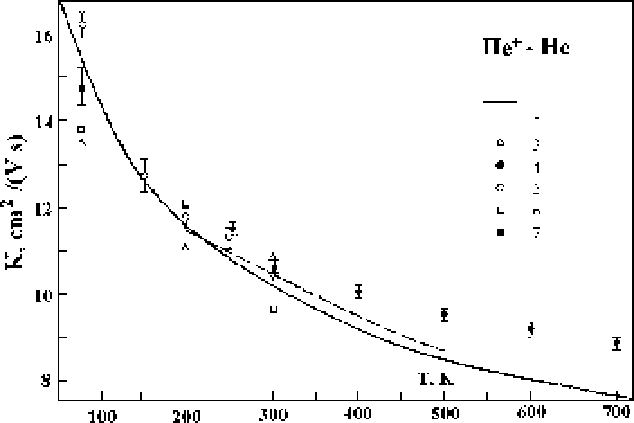Environmental Engineering Reference
In-Depth Information
Figure 4.7
The temperature dependence for the mobility of He
C
ions in helium at low electric
field strengths. Theory: 1 - formula (4.94), 2 - [57], experiment: 3 - [58], 4 - [59], 5 - [60], 6 -
[61], 7 - [62].
4.4.2
Mobility of Ions at High and Intermediate Field Strengths
At high electric fields in accordance with the criterion
eE
λ
T
the ion drift velocity is much greater than the ion thermal velocity, and in the case
of drift of atomic ions in a parent gas, because of the absence of elastic scattering,
ion velocities in the field direction are much greater than in other directions. Mov-
ing in a strong electric field, the ion accelerates under the action of the field, stops
as a result of the charge exchange, and this process is repeated. In considering this
limiting case and following [40, 63], we find the ion drift velocity under the assump-
tion that the charge exchange cross section
res
does not depend on the collision
velocity. Ions are accelerated in the direction of the electric field, and the velocity
in the field direction is large in comparison with that in transverse directions. We
introduce the distribution function
f
(
v
x
) for ions for velocities
v
x
in the field direc-
tion, which is analogous to the probability
P
(
t
) of absence of charge exchange with
time
t
after the previous exchange event. This probability satisfies the equation
dP
dt
D
ν
σ
P
,
where
res
is the rate of the resonant charge exchange process. The solu-
tion of this equation is
ν
D
N
σ
v
x
0
@
1
A
.
Z
t
dt
0
P
(
t
)
D
exp
ν
0

